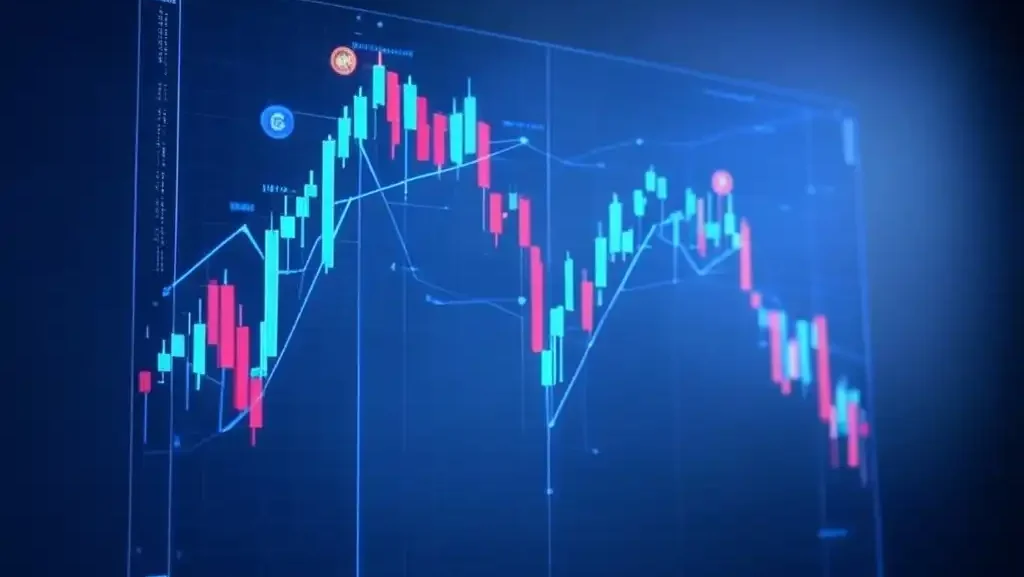Reading Basic Charts

Charts are essential tools for cryptocurrency investors, providing visual representations of price movements, trading volumes, and market trends. Understanding how to read these charts is a fundamental skill that can help you make more informed investment decisions. This guide will walk you through the basics of cryptocurrency chart reading and analysis.
Types of Cryptocurrency Charts
There are several chart types used in cryptocurrency analysis, each offering different perspectives on market activity:
1. Line Charts
Line charts are the simplest form of price charts:
- Connect closing prices over a specified time period
- Provide a clean, straightforward view of price movements
- Useful for identifying overall trends
- Lack details about price fluctuations within each time period
2. Bar Charts
Bar charts offer more information than line charts:
- Each bar represents a time period (hour, day, week, etc.)
- Shows the opening, closing, high, and low prices for each period
- Vertical line represents the range between high and low prices
- Small horizontal lines on the left and right represent opening and closing prices respectively
3. Candlestick Charts
Candlestick charts are the most popular and information-rich chart type in crypto markets:
- Each "candle" represents a specific time period
- The "body" (rectangle) shows the opening and closing prices
- The "wicks" or "shadows" (lines extending from the body) show the high and low prices
- Green/white candles indicate price increases (closing price higher than opening price)
- Red/black candles indicate price decreases (closing price lower than opening price)
- Candle patterns can signal potential market reversals or continuation patterns
4. Volume Charts
Volume charts display the trading activity over time:
- Usually shown as bars at the bottom of price charts
- Higher bars indicate more trading activity during that period
- Volume often confirms the strength of price trends
- Divergence between price and volume can signal potential reversals
Timeframes in Chart Analysis
Charts can display data across various timeframes, each serving different purposes:
- Long timeframes (weekly, monthly):
- Used for identifying major trends and market cycles
- Provide a “big picture” view
- Typically used by long-term investors
- Medium timeframes (4-hour, daily):
- Balanced view suitable for swing traders
- Filter out some market noise while maintaining detail
- Most commonly used by retail investors
- Short timeframes (1-minute, 5-minute, 15-minute, 1-hour):
- Used by short-term traders and day traders
- Show more price detail but also more “noise”
- Prone to false signals
Essential Chart Elements and Indicators
Beyond the basic price and volume data, several other elements help analyze cryptocurrency charts:
1. Support and Resistance Levels
Support and resistance are key concepts in technical analysis:
- Support levels are price points where downward trends tend to pause or reverse due to concentrated buying interest
- Resistance levels are price points where upward trends tend to pause or reverse due to concentrated selling interest
- When broken, support often becomes resistance and vice versa
- These levels become stronger the more times they’re tested without breaking
2. Trendlines
Trendlines are drawn to visualize the direction of market movement:
- Uptrend lines connect a series of higher lows
- Downtrend lines connect a series of lower highs
- Horizontal lines indicate sideways trading ranges
- The slope of the trendline indicates the strength of the trend
- Breaking a trendline may signal a potential trend reversal
3. Moving Averages
Moving averages (MAs) smooth out price data to identify trends:
- Calculate the average price over a specified period
- Simple Moving Average (SMA): Equal weight to all prices in the period
- Exponential Moving Average (EMA): Greater weight to more recent prices
- Common periods include 20, 50, 100, and 200 days
- When shorter-term MAs cross above longer-term MAs ("golden cross"), it’s often considered bullish
- When shorter-term MAs cross below longer-term MAs ("death cross"), it’s often considered bearish
- Price crossing above or below significant MAs can signal potential trend changes
4. Relative Strength Index (RSI)
The RSI is a momentum oscillator that measures the speed and change of price movements:
- Ranges from 0 to 100
- Typically, readings above 70 indicate overbought conditions (potential sell signal)
- Readings below 30 indicate oversold conditions (potential buy signal)
- Can form chart patterns that may not be visible on the price chart itself
- Divergence between RSI and price can signal potential reversals
5. Bollinger Bands
Bollinger Bands consist of three lines that help identify volatility and potential price levels:
- Middle line: Typically a 20-period simple moving average
- Upper band: Middle line plus two standard deviations
- Lower band: Middle line minus two standard deviations
- Bands widen during volatile periods and contract during less volatile periods
- Price touching or exceeding bands may indicate overbought or oversold conditions
- "Bollinger Band squeeze" (bands tightening) often precedes significant price movements
Common Chart Patterns
Certain price patterns tend to repeat across different markets and timeframes:
Reversal Patterns
Patterns that often signal the end of one trend and the beginning of a new opposite trend:
- Head and Shoulders: Three-peaked pattern signaling a bullish-to-bearish reversal
- Inverse Head and Shoulders: Three-bottomed pattern signaling a bearish-to-bullish reversal
- Double Top/Bottom: M-shaped or W-shaped patterns signaling potential reversals
- Triple Top/Bottom: Similar to double patterns but with three peaks or troughs
Continuation Patterns
Patterns that suggest the current trend will continue after a brief pause:
- Flags and Pennants: Brief consolidation periods in strong trends
- Triangles: Converging trendlines forming symmetric, ascending, or descending triangles
- Rectangles: Price trading within horizontal support and resistance channels
Practical Tips for Chart Reading
For beginners approaching cryptocurrency chart analysis:
- Start Simple: Focus on understanding price action and volume before adding complex indicators
- Use Multiple Timeframes: Analyze both shorter and longer timeframes for better context
- Confirm Signals: Look for confirmation from multiple indicators rather than relying on just one
- Mind the Context: Consider market news, overall trends, and market sentiment alongside technical analysis
- Practice Consistently: Chart reading is a skill that improves with practice and experience
- Keep a Trading Journal: Document your observations, predictions, and outcomes to refine your analysis over time
- Remember the Limitations: Technical analysis is probabilistic, not deterministic, and no pattern or indicator is 100% reliable
Conclusion
Chart reading is both an art and a science that takes time to master. While technical analysis can never predict cryptocurrency prices with certainty, understanding basic chart patterns and indicators can significantly improve your ability to identify trends, potential entry and exit points, and risk management levels. Combined with fundamental analysis and risk management strategies, chart reading skills form an essential component of a well-rounded cryptocurrency investment approach.


